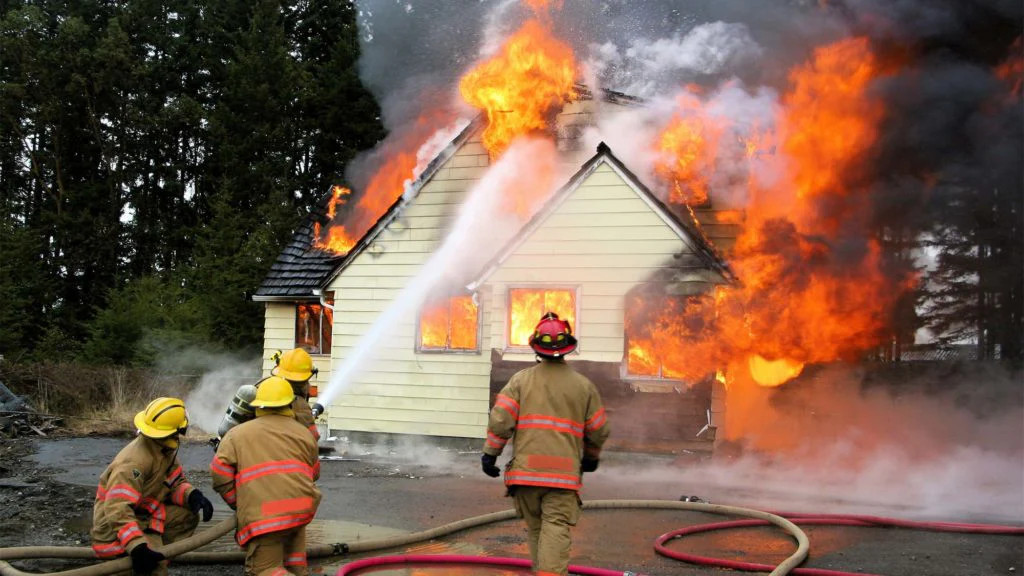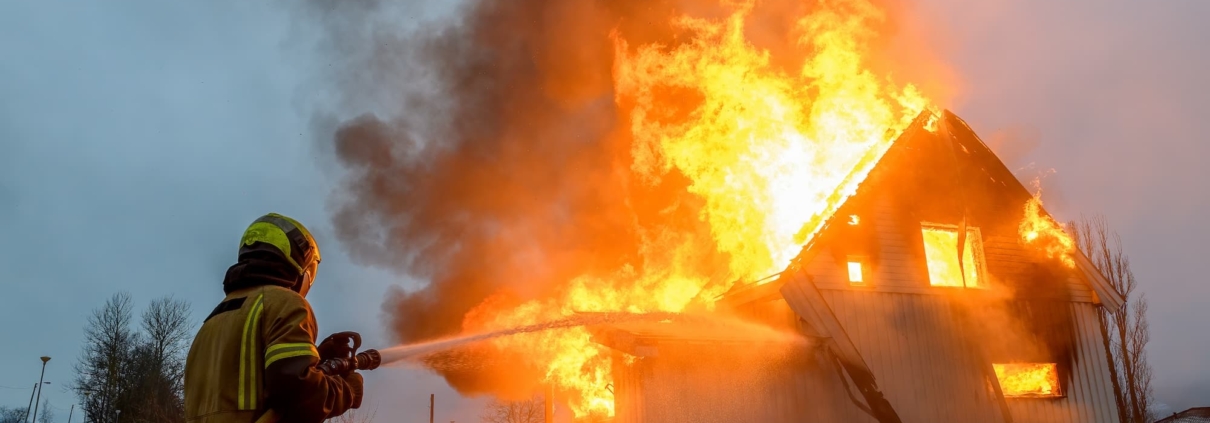When Should You Contact a Fire Mitigation Specialist?
You’ve just put out a fire—or the fire department did—and now you’re standing in the middle of your home or building thinking, “What now?” The flames are gone, but the smoke, soot, and mess they left behind are still very much in your face. The smell? A mix of burnt wires and regret. You’re not sure if you need a cleanup crew, a renovation team, or a magician. Spoiler: you need a fire mitigation specialist, and probably sooner than you think.
Fires don’t just leave behind visible damage. They mess with your structure, your air quality, and your peace of mind. Knowing when to call a fire mitigation specialist can prevent your situation from going from bad to much worse. If you’re still weighing your options, here’s exactly what to look for—and why waiting is not a good game plan.
Understanding Fire Mitigation: Why Timing Is Everything
Fires may be fast, but their aftermath sticks around. Fire mitigation isn’t about making things “look nice”—it’s about stopping hidden damage from spreading and creating health and structural hazards. The faster the response, the less you’ll lose.
Soot and Smoke Residue Set In Fast
Even after a small fire, soot and smoke particles cling to everything. They’re acidic and will start eating away at surfaces like paint, tile, metal, and fabric within hours. Left untreated, those tiny particles can cause discoloration, corrosion, and respiratory problems.
Water from Firefighting Can Create New Problems
If your fire was put out with water, you’ve now got a water damage issue too. Wet materials—especially drywall —can trap moisture, fueling mold growth in places you can’t see.
Fun Fact: Smoke can spread to rooms untouched by fire, even sneaking through HVAC systems, under doors, and into closed drawers.
Signs You Need a Fire Mitigation Specialist Right Away
If you’re standing around wondering whether things are “bad enough” to call a professional, they probably are. Some signs of damage are obvious, others are lurking beneath the surface—but all need fast action.

Persistent Odor That Won’t Go Away
If your home still smells like smoke days after the fire, that’s not just annoying—it’s a sign that smoke particles have permeated surfaces like drywall, wood. Febreze won’t fix this.
Discoloration on Walls, Ceilings, or Floors
Yellowing, dark streaks, or cloudy residue is usually soot-related. These stains aren’t just cosmetic—they can damage paint, plaster, and building materials over time.
Visible Structural Damage or Warping
Wood beams, ceilings, and flooring can warp, split, or become structurally unstable even if the fire didn’t touch them directly. Heat travels fast, and so does damage.
Electrical Issues After a Fire
If outlets are acting weird, lights are flickering, or you smell burning when something is plugged in, your wiring may have been affected. Fire mitigation experts often work alongside electricians to safely assess and isolate these hazards.
What a Fire Mitigation Specialist Actually Does
This isn’t a janitorial job. Fire mitigation involves a combination of scientific cleaning, environmental safety, and structural evaluation. It’s methodical, regulated, and essential if you want to avoid more problems later.
Assessment and Safety Inspection
- A full site assessment is conducted to locate areas affected by fire, smoke, and water.
- Structural integrity, material conditions, and indoor air quality are evaluated.
- A customized mitigation plan is created based on safety and damage findings.
Soot and Smoke Removal
- HEPA vacuums and dry ice blasting are used to clean surfaces and air ducts.
- This method prevents cross-contamination and protects HVAC systems.
- Unlike surface cleaning, it eliminates embedded particles that cause ongoing damage.
Odor Neutralization
This goes beyond masking smells. Fire mitigation professionals use ozone machines, hydroxyl generators, and thermal fogging to neutralize particles that cause lingering smoke odors.
Drying and Mold Prevention
If water was involved, drying begins immediately. Industrial dehumidifiers and moisture sensors are used to remove humidity and stop mold in its tracks.
| Mitigation Phase | Action Performed | Why It Matters |
|---|---|---|
| Site Inspection | Identify fire, smoke, and water impact zones | Prevents missed hazards |
| Soot Cleaning | HEPA vacuuming, dry-ice blasting, duct cleaning | Removes acidic particles |
| Odor Removal | Ozone, fogging, and carbon filtration | Restores breathable air |
| Drying & Mold Control | Dehumidification, material removal | Prevents secondary damage |
Fun Fact: Smoke-damaged electronics can fail weeks or months later if the corrosive particles aren’t professionally cleaned out.

How Waiting Makes Fire Damage Worse
Time is not your friend after a fire. Every hour that passes increases the risk of permanent damage—not just to your home, but to your health.
Surface Damage Becomes Permanent
Walls, appliances, and flooring exposed to soot may look savable today—but wait too long and you’ll be replacing them entirely. The acid in soot corrodes metal, eats paint, and ruins fabrics.
Air Quality Gets Hazardous
Microscopic soot particles can stay suspended in the air for weeks. If you’re breathing them in, you’re risking sinus irritation, asthma flare-ups, or worse.
Insurance Complications
Delaying fire mitigation can also complicate your insurance claim. Most policies require policyholders to take “reasonable steps” to prevent further damage—waiting too long may be seen as negligence.
When to Make the Call (And Who You Should Call)
As soon as it’s safe to enter the property and the fire department gives the go-ahead, call a fire mitigation specialist. Don’t wait for the smell to fade or for walls to look worse—by then, the damage is deep.
Post-Fire Timeline to Keep in Mind
- Within 24 Hours: Call a mitigation professional and start initial inspection.
- Within 48 Hours: Begin soot/smoke removal, deodorization, and drying.
- Within 1 Week: Full mitigation plan should be in motion—delays now lead to long-term damage.
Avoid using general cleaning services or doing DIY cleanup—fire residue requires specific equipment and expertise to avoid spreading toxins or embedding them further.
Common Questions About Fire Mitigation Specialists
What’s the difference between fire mitigation and fire restoration?
Mitigation comes first. It focuses on stopping further damage, cleaning up smoke, and stabilizing the structure. Restoration handles the rebuild, repairs, and replacements after mitigation is complete.
Do I need to contact a specialist for small fires?
Yes—if there’s smoke or soot. Even a small kitchen fire can fill a house with residue that sinks into fabrics and vents. It’s not about the size of the flame—it’s about the aftereffects.
Is smoke damage harmful to health?
Absolutely. Inhaling fine smoke particles over time can lead to respiratory issues, headaches, and long-term lung problems, especially for kids, seniors, or people with asthma.
Can I stay in the building during fire mitigation?
It depends on the damage and air quality. If the property is safe and not heavily contaminated, it may be possible. Professionals will test air quality and make recommendations based on safety standards.
Does insurance cover fire mitigation services?
Usually yes. Most standard homeowners and commercial property insurance policies cover fire mitigation as part of fire damage recovery. Just make sure to document everything and act quickly.
Conclusion
Fire damage doesn’t end when the flames are gone. Smoke, soot, water, and lingering odors can cause lasting damage if not handled by professionals—and fast. Whether it was a minor kitchen mishap or a major structural blaze, the moment cleanup begins is the moment recovery starts.
Don’t second-guess your next step. If you’ve experienced a fire of any size, it’s time to call a fire mitigation specialist. Immediate action can save your property, protect your health, and make sure your insurance claim stays on track. The faster you move, the more you keep.
Learn More: https://prestige-nw.com/?utm_source=backlink
Reviewer:Matthew Moore brings over 15 years of experience in residential renovation marketing. The review provided helped shape this content to better connect with homeowners seeking reliable, high-quality restoration and home improvement services.



Leave a Reply
Want to join the discussion?Feel free to contribute!